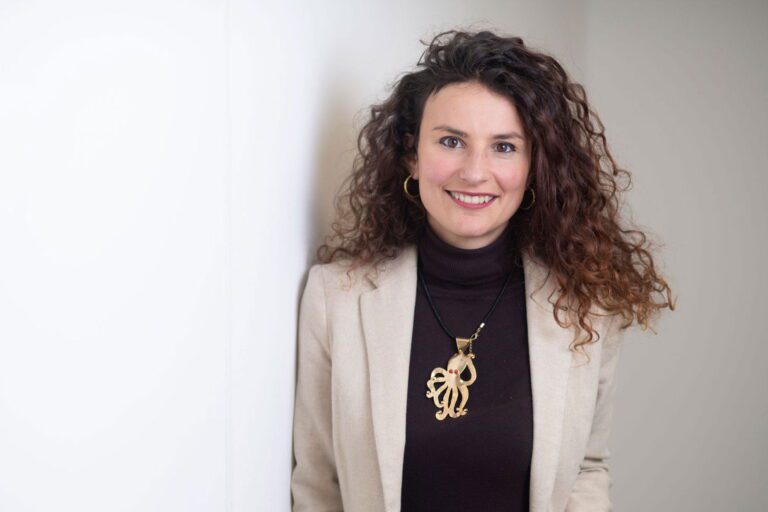Authors
Whether you are a parent, a person working in education or simply someone familiar with children, it is very likely that you have heard the terms Montessori and the Montessori method.
Maria Montessori was an Italian doctor and educator who developed an educational approach that supports children’s natural interests as opposed to a more traditional teaching method.
The Montessori method has become so popular over the years that it seems to be a Montessori’s version of everything: Montessori-bed, Montessori-toy, Montessori-kitchen set and so on. What is more, in the UK alone there are more than 600 schools that claim to follow the Montessori method with over 15,000 worldwide and countless websites claiming to sell Montessori items.
However, not all that glitters is…Montessori!
Background
In around 1929, Maria Montessori and her son founded The Association Montessori Internationale (also known as AMI), with the aim of overseeing the activities of schools and training of teachers embracing the Montessori method. AMI defines itself as “the recognised authority for those interested in applying the Montessori approach at multiple levels”.
This might leave you to believe that AMI has some sort of control over the use of the term “Montessori”. However, from a quick search on the UKIPO’s trade mark registry, you can see that AMI only has a UK trade mark registration (UK00913130851) for the logo “AMI ASSOCIATION MONTESSORI INTERNATIONALE”, and no trade mark registration for the word “Montessori” alone. In addition, there are more than 60 live UK trade marks containing the word “Montessori”, all registered in the same class (or classes relevant to education) belonging to different owners with no connection back to AMI.
With so many Montessori trade marks does this mean that the term should now be regarded as a generic term (i.e. free to be used by anyone)?
No. As we learned from the Swiss Chocolate case[1], terms which are essentially descriptive can still be protected provided they have a reputation attached to them which the public understands to mean something.
Trade Mark considerations
The primary purpose of a trade mark is to designate and identify the origin of a good or service so as to distinguish the goods or services offered under the mark by its owner from those offered by a competitor. Once registered, a trade mark gives defined rights over the use of the registered word or logo for the class (or classes) of goods and/or services for which the word or logo is registered.
However, the UK Trade Marks Act 1994 states that trade marks which are devoid of distinctive character shall not be registered. Further, applications to register signs which are identical or similar to earlier trade marks for the goods or services which are identical or similar with the goods or services for which the earlier trade mark is protected shall not be registered if they cause confusion and/or take unfair advantage of or are detrimental to the earlier mark’s reputation.
Given the statutory protections that prevent the same or confusingly similar signs being registered, the large number of trade marks which include the word “Montessori” is perplexing.
These marks are not owned by AMI and with so many registrations in the hands of so many different legal entities, surely this can only dilute the power of the mark to designate origin and weaken the value of the Montessori name.
Does this mean the Montessori is generic? Does this mean that any further registration of marks including the Montessori name is pointless?
As any mark’s distinctiveness diminishes, so too does its ability to designate the origin of the goods and services.
However, just because a lot of people are using a trade mark does not necessarily mean that it has become generic so as to lose all meaning and/or be incapable of acting as a trade mark. Provided the public has an understanding of what “Montessori” means and the principles it stands for then it is still capable of functioning as a trade mark. Further, a business is allowed to use a trade mark owned by someone else to describe its goods and services provided it does so in accordance with honest practices.
Even if trade mark protection had not been obtained, there are legal safeguards and protections that can be used to protect terms such as “Montessori”.
Extended Passing off
Where “collective goodwill” attaches to a brand name for a service or type of product then protection can be achieved via the common law tort of “extended” passing off.
If a term is used in relation to a reasonably identifiable group of products or services which have perceived distinctive qualities (albeit not necessarily superior) then that term should be protected[2]. Therefore, even if it is argued that the term “Montessori” should not be protected as a trade mark as long as the product or service offered under that name aligns with the Montessori criteria; has recognisable and distinctive qualities; and is perceived by the public as having those specific criteria then passing off can be used to stop others using the term to describe things as “Montessori” that do not meet those criteria. The fact that the public may have no clear idea of what makes a product a Montessori product is irrelevant.[3]
Unfair commercial practices
Trade mark law and passing off are essentially consumer protection measures.
The consumer is also protected by specific consumer protection legislation[4] that make it illegal to deceive customers by suggesting that a product adheres to certain criteria when, in reality, it does not or does so only partially. For example, labelling a toy as Montessori solely because it is made of wood, while ignoring that it is also brightly coloured and battery-operated, would be misleading, no matter the actual knowledge of the members of the public of the Montessori criteria such that the seller could be prosecuted by Trading Standards.
However, it is not always easy for the authorities, to identify the unfair commercial practice and enforce the law, and each case needs to be pursued on its merits and in the context of other competing priorities.
An alternative scenario? Certification marks
This all begs the question who should police the use of the Montessori name and what steps should be taken to protect consumers.
In this specific case, an obvious answer suggests that consumer protection would be enhanced if AMI successfully applied, and secured, a certification mark for the word “Montessori”.
A certification mark is a specific type of trade mark, which provides the public with a guarantee that the goods or services bearing the mark meet certain standards or possess specific characteristics defined by the owner of the mark. In this way the consumer will have the guarantee that that product or service satisfies specific criteria of quality and safety and their decision to buy (or not buy) a product or use (or not use) a service will be informed, quick and straightforward.
A certification mark for “Montessori” would define the standards and characteristics which make a good or a service a “Montessori” good or service. All the individuals, organisations, retailers and institutions that wanted to use the word Montessori and wanted to claim to follow the Montessori method, would need to adhere strictly to those standards and characteristics, giving individuals (parents in particular…) peace of mind.
Conclusions
We do not know why there is not greater control over the use of the term Montessori but believe that parents would be better served if there was.
To all individuals and businesses out there, if you believe that you are entitled to describe your goods or services in particular way because you adhere to certain standards then you should be able to do so lawfully provided you act in accordance with honest practices.
On the flip side, if you own a trade mark, you should look to control who is using it and how are they using it to ensure that you retain control over your brand.
Please contact Michelmores to find out what is the best way to protect your brand and maximise its potential.
[1] Swiss chocolate case [1998] RPC 117 at 129
[2] Diageo v Intercontinental Brands [2010] EWHC 17
[3] Swiss chocolate case
[4] Consumer Protection from Unfair Trading Regulations 2008 (implementing the Unfair Commercial Practices Directive)


